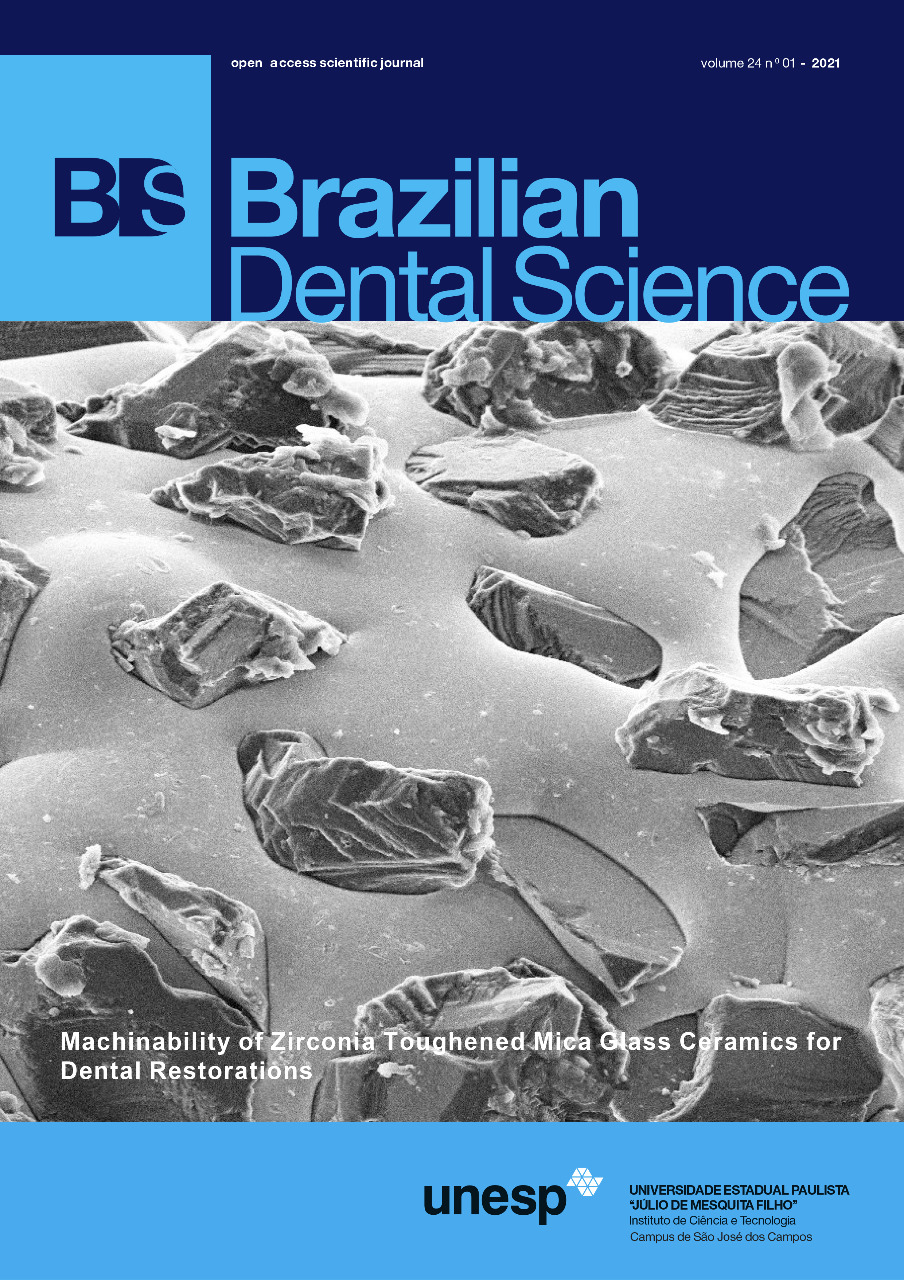Volume measurement of mandibular teeth pulp chamber as a prediction tool of gender and ethnicity in a Brazilian population
DOI:
https://doi.org/10.14295/bds.2021.v24i1.2230Abstract
Objective: Forensic dentistry has used some methods for the human identification process. However, there is a need to study characteristics that are able to perform identification more specifically, increasing accuracy. Considering the role of dental arch assessment in prediction of gender and ethnicity, the purpose of this study was to assess the volume of pulp chamber as a mean to obtain new forensic evidence. Material and methods: For this task, 1.190 cone beam computed tomography (CBCT) images were retrospectively selected and subdivided according to the population number, gender, age and ethnicity. All DICOM files were imported to the open-source software ITK-SNAP® (http://www.itksnap.org/pmwiki/pmwiki.php). The segmentation process was performed in all pulp chamber aiming to obtain pulp tissue´s volume. Results: As a result, the pulp chamber volume of mandibular canine teeth showed to be larger in white population than in non-white (P-value = 0.003) and in male individuals in comparison with female (P-value = 0.038). Conclusion: These results, however, must be confirmed by future studies with a larger sample size and by the assessment of other variables, including texture analysis and density of dental tissues.
KEYWORDS
Cone beam computed tomography; Ethnicity; Forensic dentistry; Gender; Pulp chamber volume; Volumetric assessment.
Downloads
References
References
Instituto Brasileiro de Geografia e Estatística (IBGE). Censo Brasileiro de 2010. Rio de Janeiro: IBGE, 2012.
O'Donnell C, Iino M, Mansharan K, Leditscke J, Woodford N. Contribution of postmortem multidetector CT scanning to identification of the deceased in a mass disaster: Experience gained from the 2009 Victorian bushfires. Forensic Sci Int. 2011;205(1-3):15-28.
Gamba TO, Alves MC, Haiter-Neto F. Analysis of sexual dimorphism by locating the mandibular canal in images of cone-beam computed tomography. Journal of Forensic Radiology and Imaging 2014;2:72-76.
Gamba TO, Alves MC, Haiter-Neto F. Mandibular sexual dimorphism analysis in CBCT scans. J Forensic Leg Med 2016;38:106-110.
Cameriere R, De Luca S, Alemán I, Ferrante L, Cingolani M. Age estimation by pulp/tooth ratio in lower premolars by orthopantomography. Forensic Sci Int. 2012;214(1-3):105-12.
Star H, Thevissen P, Jacobs R, Fieuws S, Solheim T, Willems G. Human dental age estimation by calculation of pulp-tooth volume ratios yielded on clinically acquired cone beam computed tomography images of monoradicular teeth. J Forensic Sci. 2011;56:77-82.
Zhi-pu Ge, Pan Yang, Gang Li, Ji-zong Zhang, Xu-chen Ma. Age estimation based on pulp cavity/chamber volume of 13 types of tooth from cone beam computed tomography images. Int J Legal Med. 2016;130:1159–1167.
Ge ZP, Ma RH, Li G, Zhang JZ, Ma XC. Age estimation based on pulp chamber volume of first molars from cone-beam computed tomography images. Forensic Sci Int. 2015;253:133.e1-7
Pinchi V, Pradella F, Buti J, Baldinotti C, Focardi M, Norelli GA. A new age estimation procedure based on the 3D CBCT study of the pulp cavity and hard tissues of the teeth for forensic purposes: A pilot study. J Forensic Leg Med. 2015;36:150-7
Downloads
Published
How to Cite
Issue
Section
License
Brazilian Dental Science uses the Creative Commons (CC-BY 4.0) license, thus preserving the integrity of articles in an open access environment. The journal allows the author to retain publishing rights without restrictions.
=================




























